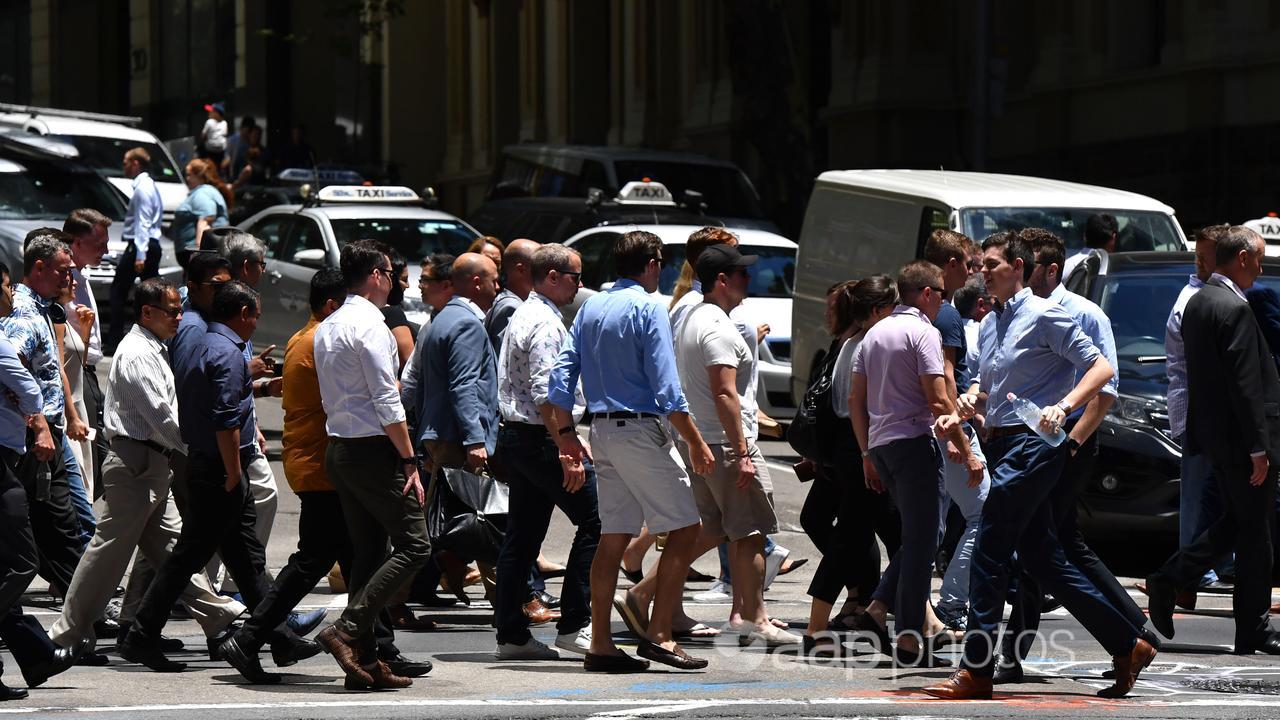A hiring slowdown is expected to hit young people, older workers and women hardest, experts warn as fresh forecasts point to more deterioration in the labour market.
The Australian jobs market has proved resilient to souring economic conditions, though Deloitte Access Economics partner David Rumbens said evidence of a weak economy was “finally bleeding through”.
The jobless rate has ticked higher to 4.1 per cent and employment growth has been driven by the non-market sector, which covers jobs in health and education.
Hiring in the private sector hiring was stalling, Mr Rumbens said, with chief financial officers surveyed by Deloitte broadly planning to keep recruitment on hold over the next year.

The economic team expects the jobless rate to rise to 4.5 per cent this financial year, representing an extra 101,500 people in unemployment queues.
This is slightly higher than the 4.4 per cent peak in unemployment tipped by the Reserve Bank of Australia by June 2025.
Rising unemployment would hit different sectors and demographics unevenly, Swinburne University lecturer in accounting, economics and finance Jason Tian said.
“Women, who are disproportionately represented in part-time and casual work, are particularly vulnerable during economic downturns,” Dr Tian said.
Older workers, typically more expensive to employ, were more likely to face long-term unemployment and age discrimination in a weaker labour market.
Employers may be reluctant to take on young workers, especially those just entering the workforce.
“Policymakers must consider the diverse and unequal effects of their decisions on different segments of the population,” Dr Tian said.
Consumer-facing sectors such as construction, retail and hospitality are usually the hardest hit in an economic slowdown.
Yet a focus on home-building and infrastructure should keep construction workers in high demand, with Deloitte forecasting a two per cent expansion in the blue collar workforce – 74,300 workers – this financial year.
In the same period, the group was forecasting a dip in white-collar jobs of 0.4 per cent, or 23,599, as businesses “look to kick start activity without increasing headcount”.
White-collar employment growth should return in 2025/26, tipped to rise 1.6 per cent.

Deloitte expects strength in health, education and other non-market job creation to endure and support an increase of 1.69 per cent, or 96,700 workers, in human services employment.
The labour market lagged broader economic performance by about six months, Mr Rumbens said.
“That means the labour market may continue to get worse with unemployment rising at the same time economic green shoots are appearing elsewhere,” he said.
The deterioration in economic activity has likely bottomed out, with hints of stabilisation in Westpac and Melbourne Institute’s leading index.
The collection of leading indicators signalled stronger activity in coming months, but sharp falls in commodity prices and the prospect of no interest rate cuts until 2025 are weighing on the outlook.
“All up, growth momentum looks likely to remain bogged down for some time yet,” Westpac Economics’ head of Australian macro-forecasting Matt Hassan said.




















